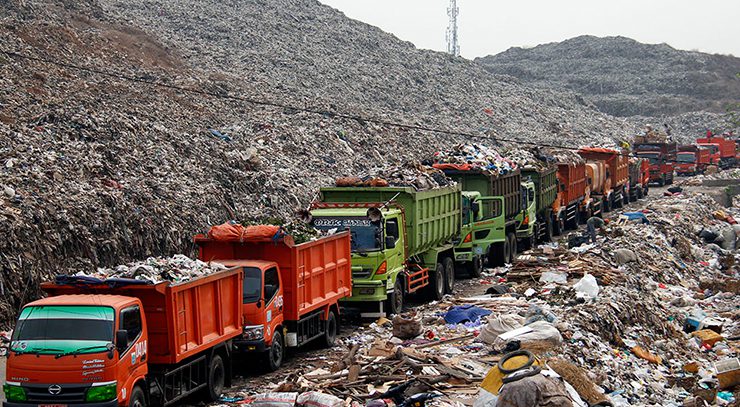Understanding Inorganic Waste & Examples of Inorganic Waste – Sinaumedia readers, did you know that inorganic waste takes approximately 500 years to decompose? This of course will have a negative impact on living things on earth.
n fact, many parties have tried and urged the people around them to be able to sort and choose which is inorganic waste and which is organic waste.
This problem is very crucial so that in-depth knowledge related to inorganic waste is needed. Therefore, this article will provide an explanation about inorganic waste. Listen to the end of the discussion.
What is Inorganic Waste?
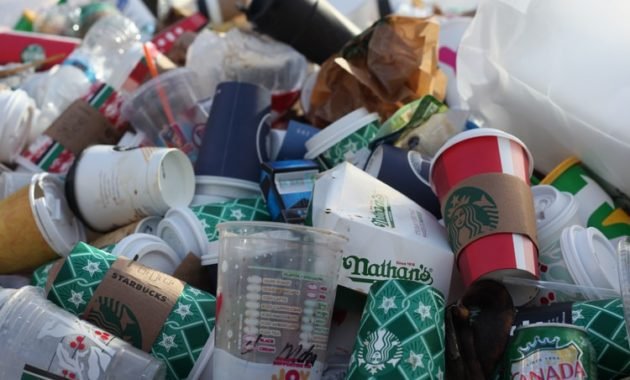
Inorganic waste is a kind of garbage or the rest of the material that is not easily decomposed which usually does not originate from animals and plants. Inorganic waste can be in the form of plastic, glass or glass bottles, cans, paper, and other food wrappers.
It should be noted that most inorganic wastes do not decompose naturally. Even if there is something that can be decomposed naturally, the waste will take a longer time when compared to organic waste.
The danger is that if inorganic waste is allowed to accumulate, it will result in the emergence of various diseases, such as cholera and diarrhea. Not only that, various environmental pollution can also occur, such as soil and water pollution.
Based on the type, inorganic waste is divided into three, namely solid inorganic waste, liquid inorganic waste, and gas inorganic waste. For a more complete explanation of the three types of inorganic waste, see the explanation below.
Types of Inorganic Waste
Inorganic waste is divided into several types. This division is useful for determining what processing is appropriate to do so that waste or garbage does not damage or pollute the surrounding environment.
The following are the types of inorganic waste based on their form, including:
1. Solid Inorganic Waste
Solid inorganic waste is waste that is hard, solid, and can be touched or handled. There are also solid inorganic wastes that cannot be touched because they contain hazardous chemicals. As for examples of solid inorganic waste, namely aluminum, iron, base, belong bottles, plastic, and several similar items.
2. Liquid Inorganic Waste
This inorganic waste is in the form of a very dangerous liquid originating from a factory or production company. Generally, these factories or production companies channel this liquid inorganic waste into rivers so that the living things that live there and the local environment will be damaged and polluted.
Not only from factories or production companies, this liquid inorganic waste can also come from household activities or activities, such as from washing soap and detergent. Actually, the most dangerous thing is the waste from oil spills in the sea.
3. Inorganic Waste Gas
Inorganic waste gas or wind is waste that cannot be touched by the senses. Generally, this inorganic waste gas comes from chimneys in production factories. The smoke or steam will be very dangerous because it can cause the earth to be hotter, prone to acid rain, and various pollutants will increase.
Apart from factory chimney smoke, this inorganic waste gas can come from gas or motor vehicle fumes that contain carbon monoxide or CO gas which if inhaled will be dangerous, and can even cause death.
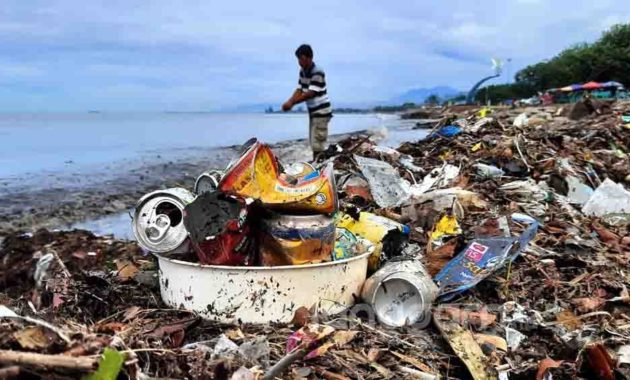
Characteristics of Inorganic Waste
To make it easier to know in detail what inorganic waste looks like, first identify the characteristics and characteristics of inorganic waste. The following will briefly describe the characteristics of inorganic waste, including:
- The main characteristic of this inorganic or non-natural waste is that it is not easily biodegradable . This means that this inorganic waste will require a fairly long period of time to decompose and decompose naturally. In fact, some of these types of waste take decades to decompose into smaller substances, elements, or particles, such as undersea plastic waste.
- Next, the characteristic of this inorganic waste is that it is obtained or made from manufactured or synthetic materials . For example, styrofoam , which is an inorganic type of waste made from a mixture of synthetic materials, such as polystyrene and CFC gas, both of which can damage and thin the ozone layer or O3.
- Another characteristic of inorganic waste is that it can be processed through a recycling process . Although this inorganic waste is not easily decomposed as described in the first feature, this waste can be processed through a recycling process, either processed for other needs or processed into new goods which are certainly more useful. For example, plastic bottles can be processed into handicrafts and used as plant pots or the like.
Examples of Inorganic Waste
Here are some examples of inorganic waste, among others.
- Plastic
- Low Density Polyethylene (LDPE) and Low Linear Density Polyethylene LLDPE, which are types of agricultural plastic used for straw, greenhouse covers, and the like.
- High Density Polyethylene (HDPE), which is a type of agricultural plastic used for pesticide containers or nursery pots.
- Polypropylene (PP), a type of thermoplastic polymer used for woven tarpaulins, and so on.
- Polystyrene (PS), a type of synthetic aromatic hydrocarbon polymer agricultural plastic used for nursery containers or media.
- Crackle Bag
- Iron Metal
- Steel Waste
- Broken Glass and Ceramics
- Detergent Water
- Leftover Bath Soap
- Aluminum Cans
- Textile Waste
- Waste Oil
- Bottle cap
- Styrofoam
- Used tires
- Various Electronics
- Pesticide Disposal
Recently, the world has been fussed over by the presence of plastic pollutants and petroleum contaminants in the sea. Also the presence of radioactive pollutants and air pollution.
Knowledge about the threat of human negligence, needs to be transferred to students as the foundation of hope for the nation’s leaders in the future. This book is expected to be able to provide insight regarding problems that occur in the environment, especially the problem of marine pollution.
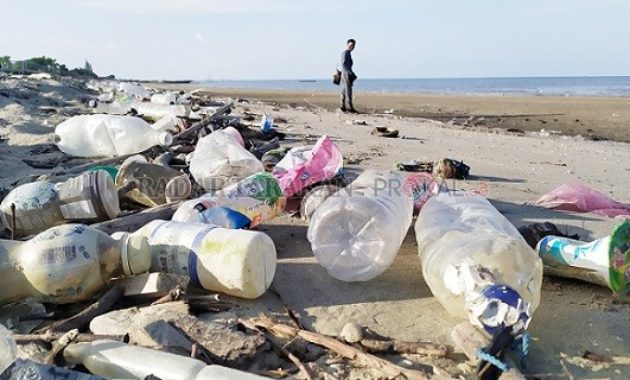
What are the Negative Impacts of Inorganic Waste?
As is known, inorganic waste will have a negative and bad impact or influence not only on the environment, but on living things that live and live in that environment.
Many people have tried to destroy inorganic waste in various ways, such as throwing it into the sea, burning it, and even dumping it in the ground.
1. Negative Impact of Burning Inorganic Waste
Burning inorganic waste is tantamount to provoking air pollution. Then, the smoke that will be produced from burning the waste can threaten health, such as health for the lungs and heart. This is because the various pollutants contained in the inorganic waste will be dangerous and threaten health because of the toxic content or elements.
2. Negative Impacts of Disposing of Inorganic Waste into Rivers and Seas
Then, throwing inorganic waste into rivers, even into the sea will increase water pollution. Water which has a function as a source of human life, especially for drinking, bathing, washing, and other needs becomes very dangerous when used. Not only that, the disposal of inorganic waste into the sea will threaten the safety of marine biota.
The United Nations or the United Nations has stated that 2.2 billion people do not have access to adequate and proper drinking water services. The amount of clean water available is still very less compared to the amount they should need.
Experts also say that about 4.8 to 12.7 tons of waste enters the seabed every year. Inorganic plastic waste that gradually breaks down will form microplastics which in turn will be consumed again by humans, thus threatening health.
Not only humans, but also animals. Imagine how many animals have died due to their inadvertent eating of inorganic waste that has been produced by humans. It is this waste or garbage that brings disease to the animals.
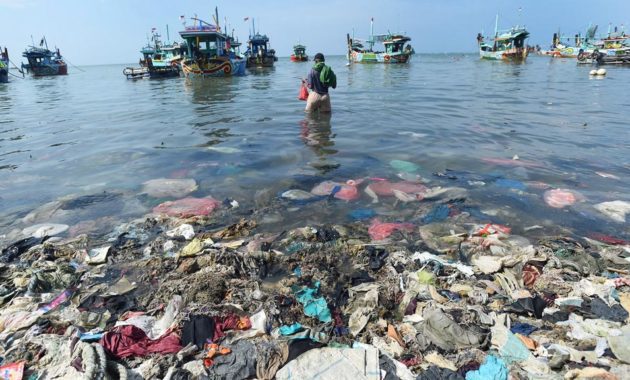
3. Negative Impacts if Inorganic Waste is Piled on the Ground
Inorganic waste that is attempted to be stockpiled can also have a bad impact, namely soil pollution. Groundwater can contain toxins because the soil has been mixed with various types of inorganic waste that contain toxic or toxic substances.
Until finally, the balance of the ecosystem is also disturbed and has an impact on plant growth. Hoarding inorganic waste in the soil will not make the waste disappear or disappear, but rather cause problems.
In addition, the fertility of the soil is disrupted which in the end the bad or negative impact returns to humans. Therefore, it is very important to pay attention to these inorganic wastes and return to pay attention and think about this problem seriously and carefully.
Used plastic bottles that are considered trash can turn out to be useful items, even worth selling, and indirectly we protect the environment because it helps reduce the amount of waste.
Benefits of Inorganic Waste
Inorganic waste is indeed a threat to the environment, but currently, inorganic waste management has been considered. This has resulted in the threat of inorganic waste being slightly reduced, although not completely.
There are several inorganic wastes that can be processed and recycled and are environmentally friendly so that they can be reused. Then there are some important benefits of inorganic waste that you and all of us need to know. Here are some of the benefits of inorganic waste for human life, including:
1. Inorganic Waste as a Basic Material for Making Handicrafts
In this increasingly modern era, creative hands have emerged from the people of Indonesia and also the world so that they have started to see and consider the benefits or hidden uses of this inorganic waste.
The first benefit of inorganic waste is that it can be used as material for making handicrafts or handicrafts. As for several types of handicrafts which are derived from inorganic waste, it turns out that they have high economic value or selling value. Moreover, handicrafts from the processed inorganic waste can develop into a business or business opportunity that is quite large.
How come? Yes, that’s because, as explained earlier, creative hands have emerged so that even inorganic waste materials can be transformed and managed into various types of handicrafts that are useful and of sale value.

2. Reusable _
The term reusable means that an inorganic waste or similar material does not need to be disposed of. In other words, in the end, this type of waste will not be different, but can be useful and reused without having to be disposed of.
For example, used cardboard. If used cardboard is disposed of, of course the cardboard will become one of the materials or inorganic waste that can pollute the environment. However, the cardboard can be used for other needs or purposes. Until finally, the cardboard is not a waste, but can be useful and used for other purposes.
3. Inorganic Waste can be Melted to Make Other Goods
There are some inorganic wastes, such as plastic and metal, which are inorganic wastes with high economic value. As we know that metal materials or waste can be smelted or re-melted together with other metals. Then, the metal that has been melted will return to a liquid metal that can be transformed into a new form.
For example, scrap metal from collectors can be taken to a metal smelter. Then, after the irons are melted down and some other chemical elements are added, the melted iron becomes new iron that can be used and reused.
4. Inorganic Waste for Recycled Materials
Inorganic waste is often used as a material for recycling. Generally, the material used for recycling is plastic waste which is easy to collect and then recycle.
This recycling of inorganic plastic waste can reduce the possibility of the accumulation of other inorganic wastes that exist. This is certainly a positive impact on the state of the environment around us.
5. Inorganic Waste Can Make Money
Next, inorganic waste can generate money. Because besides being made and processed into handicrafts which are then sold and make money, of course you can also sell bottles and used inorganic waste. You can sell inorganic waste, such as used batteries, used newspapers, and the like to used goods collectors.
Of course, you can exchange this for something in the form of cash. Although the amount obtained is not much, but this will be very profitable if we do it regularly. Because, apart from being able to help clean up the surrounding environment from inorganic waste, you can also get money from sales to these used goods collectors.
How to Treat Inorganic Waste
In order to avoid the bad impact of inorganic wastes, it is necessary to carry out appropriate utilization methods, namely recycling inorganic waste into goods that can be reused.
However, there is an important point that must be done, namely separating in advance which is organic waste and which is inorganic waste in your home. Thus, waste that is still fit for recycling will be easier to process.
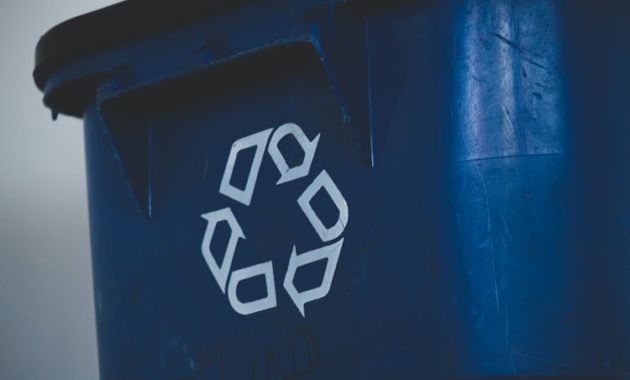
Below will be explained several types of waste that can be reused
1. Inorganic Waste in the form of Cans
Canned waste is a type of waste that cannot be decomposed even though it has been waste for hundreds, even thousands of years. Therefore, as much as possible we use inorganic waste cans as recycling material so that the quantity of waste does not continue to soar.
The simple way is to use used drink, paint, or food cans as flower pots or media to store other items.
2. Inorganic Waste in the form of Glass Bottles
In waste treatment or recycling facilities, inorganic waste in the form of glass bottles or glass bottles will usually be reprocessed into new bottles.
3. Inorganic Waste in the form of Paper
Management of inorganic waste in the form of paper can be done at home. The trick is to collect some books or papers that are no longer used (used), then hand them over to a waste bank or to a waste paper collector in places that are specifically meant to recycle such inorganic waste.
Instead of just piling them up or throwing them into the sea, it would be nice if the remaining papers were processed into useful recycled paper, such as bags, masks, and some other handicrafts.
4. Inorganic Waste in the form of Fabric
We often ignore the existence of inorganic fabric waste. Clothes, pants, and the like that are not used have piled up in the closet. To overcome this, there is a way to reuse it so that its use can also change. For example, clothes that are no longer used can be used as mops, rags, or donated to people who need it more if the clothes are still fit for use.
As for inorganic waste craftsmen, usually inorganic waste in the form of cloth will be modified into a dispenser cover, table cloth, and even blankets.
5. Inorganic Waste in the form of Plastic
Currently, inorganic waste in the form of plastic such as used food packaging has been processed into various kinds of crafts, including handicrafts for wallets, tissue holders, small bags, and even clothes.
That way, if we encounter plastic waste at home, it would be nice not to just throw it away. Try to separate and clean it from other waste, then you can give it to a waste bank or to an existing recycling place.
Hopefully this article can add to your insight, yes!
